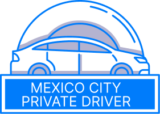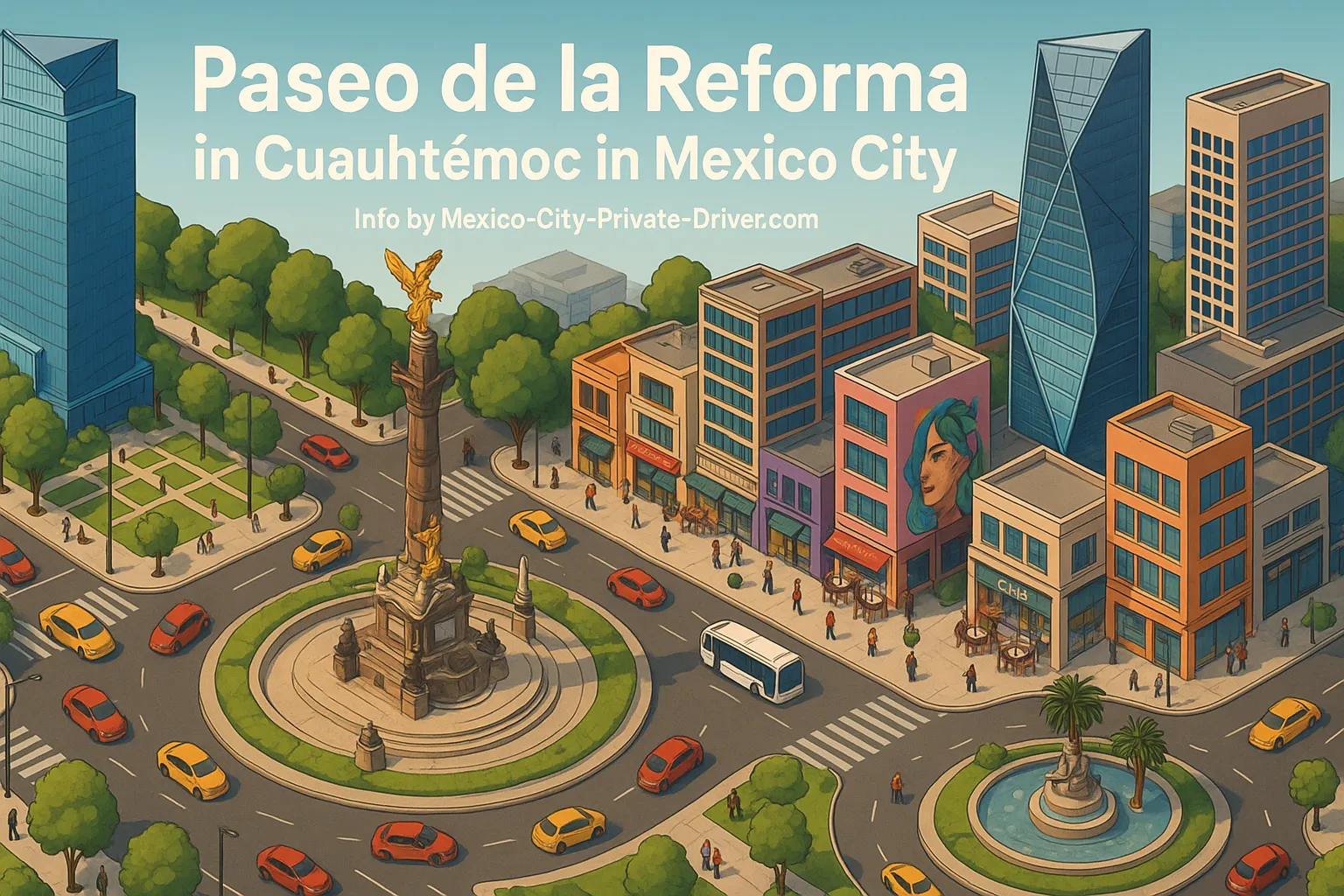Why Avenida Balderas matters to me — and why it should matter to you
As the owner and lead driver at Mexico-City-Private-Driver.com, I’ve spent thousands of hours behind the wheel on the streets of Cuauhtémoc and across Mexico City. Few streets capture the pulse of the city as directly as Avenida Balderas. It’s not the widest avenue, nor the flashiest boulevard, but it connects neighborhoods, metros, monuments and everyday life in a way that makes it indispensable for visitors and locals alike.
In this long, practical, and personal guide I’ll cover:
- Hard, practical facts about Avenida Balderas (layout, traffic, parking, transport, regulations)
- Insider tips only a private-driver service would know
- Benefits for visitors and recommended custom routes touching Balderas, Roma, Condesa, Polanco and Centro
- A memorable “wow” story that shows the human side of the avenue
Where Avenida Balderas sits in Mexico City (quick orientation)
Avenida Balderas sits in the heart of the Cuauhtémoc borough, acting as a north–south spine through parts of the Centro Histórico and adjacent neighborhoods. It’s a short but strategically located avenue that links the Historic Center with corridors that take you to Roma, Condesa and toward the west side neighborhoods like Polanco (via connecting arteries). Think of Balderas as one of those compact, high-value connectors visitors use when moving between museums, hotels, theaters and business addresses in downtown Mexico City.
Nearby neighborhoods and landmarks
- Centro Histórico (Palacio de Bellas Artes, Alameda Central, Torre Latinoamericana)
- Zona Rosa and the shopping streets that blend into Juárez and Reforma
- Roma and Condesa (via short links like Avenida Chapultepec and Álvaro Obregón — including Avenida Ámsterdam in Condesa)
- Major hotels on Reforma and in Centro (easy 5–15 minute drives depending on traffic)
- Metro Balderas (a crucial interchange for Line 1 and Line 3)
Street layout, lanes and the driving experience
Avenida Balderas is not an expressway — it’s an urban avenue with mixed traffic: private cars, taxis, buses and a lot of pedestrian flow. In my experience, the avenue has:
- Multiple lanes in sections but frequent curb-side activity (drop-offs, vendors, taxis)
- Traffic lights and pedestrian crossings that can slow the flow during rush hours
- One-way/low-speed side streets that are useful for pick-ups and drop-offs
Practical driving insight: I treat Balderas like a pivot point, not a fast corridor. If I’m moving a client east–west I’ll often use Balderas as the pivot to access Reforma, Avenida Chapultepec or Eje 1 Poniente. If speed is critical, we route around via Insurgentes or Revolución, but if the objective is to reach an address in Centro, Palacio de Bellas Artes, or Museo de Memoria y Tolerancia, Balderas gets us there efficiently.
Traffic patterns — when to avoid Avenida Balderas
Mexico City traffic is famously variable. On Balderas I see consistent patterns:
- Rush hours (Monday–Friday): 07:00–09:30 and 17:00–20:00 — expect slow moving traffic and crowded crosswalks
- Midday: often busy around museums and office lunches; parking maneuvers increase congestion
- Weekend afternoons: heavy pedestrian movement as people walk from Roma/Condesa to Centro — vehicle speed reduced
- Event nights: theater premieres, concerts or demonstrations near Reforma/Alameda can spill onto Balderas
Driver tip: I always build 15–40 minutes of buffer into city pickups that involve Balderas if they fall inside rush-hour windows.
Public transportation access
One of the biggest advantages of Avenida Balderas is its connectivity:
- Metro Balderas: an interchange station (Line 1 and Line 3) that makes Balderas accessible from east, west, and north parts of the city — ideal for clients transferring from the metro to private cars.
- Surface buses and microbuses: plenty of routes cross or run parallel, making Balderas an easy first/last mile for many travelers.
- Ecobici: bike stations are nearby (Roma/Condesa and Reforma corridors). For short hops across neighborhoods I often combine a private transfer with recommended Ecobici rides when clients want to stretch their legs.
Guest planning tip: If your flight lands early and you’re using the metro to reach Centro, I’ll pick you up at the Balderas station entrance that’s least crowded — there are two main exits and we always agree on a specific landmark (a statue, entrance, or café) to avoid confusion.
Parking, drop-off and pick-up — the private driver’s playbook
Parking in the Centro Histórico is limited. As a private driver, I’ve learned to use these tactics to make pickups quick, legal and safe:
- Use short-term curbside zones near plazas or hotel driveways when available (always ask permission for quick stops)
- Prefer side streets for staging if the main avenue is blocked by buses or vendors
- Coordinate with hotels: many hotels on Reforma and in Centro can open their driveway for drop-offs (ask the concierge to radio the valet if necessary)
- Carry small change for parking lots — public lots exist but fill up during peak hours
Insider move: For pickups at Metro Balderas I often stage on the adjacent side streets (short, one-way lanes) rather than directly at the metro exit; this lets clients walk a shorter, calmer block without getting swept into vendor crowds or taxi lines.
Local regulations and safety notes
Important regulations and safety considerations I always brief my clients on:
- Traffic rules: obey local signs; many lanes are dedicated during certain hours, and there are bus-only lanes on nearby avenues
- Hoy No Circula: seasonal driving restrictions can apply to certain license plates on high pollution days — I monitor SEMARNAT and SEMOVI advisories and adjust fleets accordingly
- Parking enforcement: parking fines and towing happen quickly; I encourage timed curb-stops or use of official parking lots
- Safety: the Centro is generally busy and safe in daylight; at night I recommend pre-arranged points and staying in main, lit avenues
Benefits for visitors — why I like using Balderas for clients
From a private-driver perspective, Avenida Balderas is a high-value street because:
- It offers direct, frequent access to the Historic Center and cultural icons (Bellas Artes, Alameda)
- It connects easily to the metro network — great for hybrid itineraries that combine private pickup with walking tours
- It’s a short hop from trendy neighborhoods like Roma and Condesa, so clients can comfortably move between museum mornings and restaurant evenings
- It offers practical pickup and drop-off points that avoid the congestion of Reforma while staying central
Examples of useful visitor itineraries that use Balderas
- Morning: Pickup at hotel in Condesa → drive via Avenida Chapultepec → quick drop at Museo de Arte Popular or Palacio de Bellas Artes (Balderas corridor) → walking tour of Centro
- Lunch: Drive from Zona Rosa to Roma’s Avenida Álvaro Obregón (via Balderas and Chapultepec) for a restaurant reservation
- Evening: Theater night at Juárez/Bellas Artes — I’ll stage on a side street off Balderas so clients walk the lit, elegant stretch
Custom routes and driving plans I recommend
Below are a few custom routes I use depending on what clients want. Each assumes a private-vehicle pace and my local knowledge of the best staging points for quick pickups and minimal walking.
1) Culture-first loop (Museums + Historic Center)
- Pickup in Roma/Condesa (Avenida Álvaro Obregón or Avenida Ámsterdam)
- Quick drive to Avenida Chapultepec → Balderas entry
- Drop at Palacio de Bellas Artes or Museo Mural Diego Rivera
- Walk through Alameda Central, then return via Balderas to your vehicle or next stop
2) Business-to-leisure (Airport or Hotel + Evening out)
- Airport transfer to a hotel near Reforma or Centro
- Late afternoon pickup via Balderas for a private food tour in Roma Norte
- Return to Polanco or Reforma depending on dinner plans
3) The Local Streetscape Tour (a private driver’s secret)
If clients want the “city beneath the monuments,” I plan a slow drive that uses Balderas as the connector between hidden plazas, colonial corners and cafés in Roma and Condesa. This is where the private driver advantage — stopping for a spontaneous coffee or photo — is most valuable.
Hotels, pickups and the most useful meet-up points
Where I meet clients most often near Balderas:
- Hotel driveways on Reforma — usually the most reliable for safe luggage handling
- Designated side streets off Balderas — less crowded and faster to re-enter traffic
- Metro Balderas exits (I specify the exact exit and a café or statue as the meeting point)
Example hotel references: If you’re staying in Centro or on Reforma I’ll typically coordinate pickup with the hotel concierge — this includes mid-range and luxury hotels on Reforma and the Historic Center. If you’re in Roma/Condesa I’ll stage near Avenida Ámsterdam or Parque México and suggest a short walk if traffic is heavy.
Local tips only a private driver would know
Here are practical things I don’t always publish on tourist pages but that I tell my clients:
- Best pickup side near Metro Balderas: choose the less commercial exit (I’ll tell you which one when I book) — it means fewer vendors and a faster join to the vehicle
- Carry a small printed address:
- Time your museum visits:
- Avoid cash surprises:
- Alternate routes I actually use:
The “wow” story — a night on Balderas that still gives me chills
I tell this story to first-time clients not to brag, but because it reveals what the street feels like outside of Google Maps. One rainy spring evening a few years back, I was driving a couple who were in town for a small family anniversary. They’d booked a last-minute rooftop dinner near Juárez and wanted a brief photo session in the Centro — nothing formal, just a few moments to capture the city with its purple jacaranda blossoms (they were in full bloom).
We stepped out on Balderas under umbrella light and traffic tins of rain. A small group of school musicians had been practicing on a corner nearby and when they saw the couple — two people clearly celebrating their life together — they spontaneously started to play a slow, intimate version of “Sabor a Mi.” In that instant the rush of buses and vendors faded and the whole block felt like a private theater. A street vendor handed the wife a sprig of jacaranda as if on cue. A police officer who normally keeps traffic moving paused and smiled. The couple embraced and the moment was so delicate, so perfectly local, that I had to stop being the driver and become a witness.
Later, while I was driving them back, the husband told me they’d planned the trip for years and had followed my company because they wanted an experience, not a transfer. That night, Balderas gave them a memory that wasn’t in any guidebook: an improvised serenade, the smell of rain, and the real Mexico City — at once chaotic and beautifully human.
Why this matters: that’s Balderas: a working city lane and an unannounced stage for human moments. As a private driver, my job is to not just move people, but to be present enough to notice when the city offers something unexpectedly true. I then give my clients time to live it.
Dining, cafés and quick stops near Balderas
For travelers who want a quick snack, coffee or a sit-down meal, Balderas and the blocks around it have a wide range:
- Traditional fonditas and taquerías for quick authentic lunches
- Casual cafés and pastry shops
Martin Weidemann is a digital transformation expert and entrepreneur with over 20 years of experience leading fintech and innovation projects. As a LinkedIn Top Voice in Digital Transformation and contributor to outlets like Forbes, he now brings that same expertise to travel and mobility in Mexico City through Mexico-City-Private-Driver.com. His focus: trustworthy service, local insights, and peace of mind for travelers.


